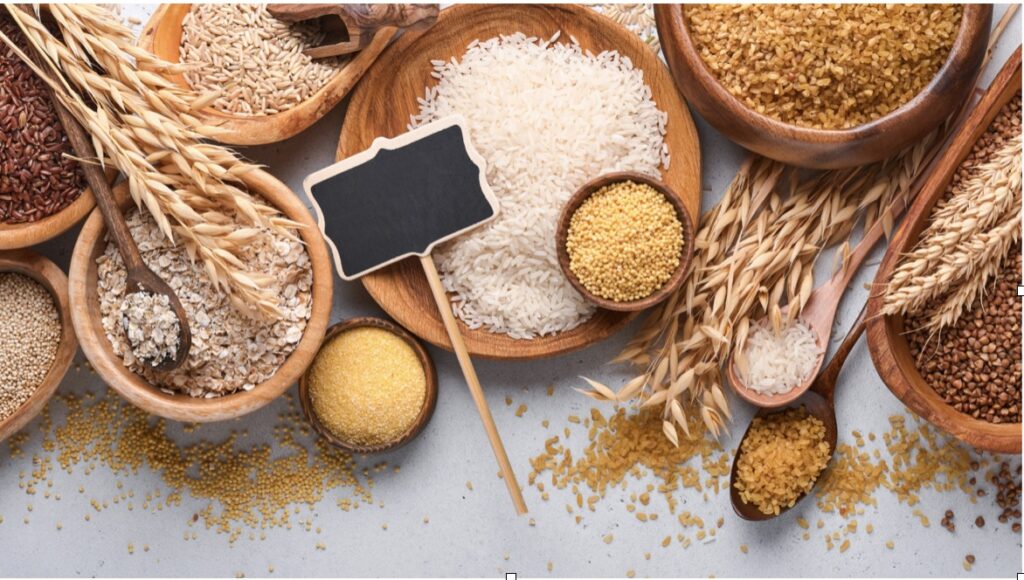Millet is a cereal grain in the Poaceae family, which is also known as the grass family. It’s commonly consumed in Africa and Asia’s poorest countries. Millet’s nutritional profile is similar to that of sorghum and other grains, despite its appearance. Millet has grown in favor in the West due to its gluten-free properties and high levels of protein, fiber, and antioxidants.
This article covers everything there is to know about millet, including its nutrients, advantages, and disadvantages.

Millet is a small, round whole grain that is cultivated in India, Nigeria, and other Asian and African countries. It’s an ancient grain that’s utilized for human use as well as livestock and bird feed .Drought and insect resistance are two of its many advantages over other crops. It may also thrive on less fertile soil and hostile environments. These advantages originate from its genetic makeup and physical structure, such as its small size and toughness.
Major and minor millets are the two types of millets, with major millets being the most popular and widely cultivated kinds.
Types Of Millets
1. Sorghum Millet is a type of sorghum grain.
In India, sorghum, also known as Jowar, is used to produce rotis and other Indian breads. Organic jowar is high in iron, protein, and fibre, and contains policosanols, which can help decrease cholesterol levels. It is indicated for wheat intolerance sufferers.
2. Finger Millets
Finger millet, often known as ragi, is a reddish-brown grain. It’s a fantastic alternative to rice and wheat because it’s high in protein and amino acids. Ragi is also utilized in the preparation of cookies and halwa. It’s also gluten-free, and it’s recommended for brain development in growing children.
3. Foxtail Millet
Foxtail millet is high in blood sugar-balancing carbs, making it useful for diabetics and heart sufferers. It comes in two forms: semolina and rice flour. It’s also known as kakum/kangni, and it’s high in iron and calcium, and it’s thought to help with immunity.
4. Pearl Millet
Pearl millet, also known as Bajra, is one of the most popular millets that you must have tried. It comes in a variety of forms, including roti and khichdi, and has numerous health benefits. Iron, protein, fiber, and minerals including calcium and magnesium are all found in bajra. As a result, it should be ingested on a daily basis to maintain a healthy diet.
5.Barnyard Millet
Sanwa, or barnyard millet, is another nutrient-dense millet with a high fiber content. If you’re trying to lose weight, including it in your diet can help you lose weight and improve your overall health. Sanwa is high in calcium and phosphorus, both of which aid in bone development.
6. Proso Millet
Proso/Broomcorn millet has a low glycemic index and is beneficial for controlling blood sugar levels. In India, it’s known as Chena and is used as bird food.
7 Amaranth Millet
Amaranth, also known as Rajgira, Ramdana, and Chola, is one of the lesser-known millets. This millet is strong in protein and aids in the prevention of hair loss and greying. Amaranth also helps to lower cholesterol levels and the risk of heart disease. Calcium, antioxidants, and other minerals are abundant.
8. Buckwheat Millet:
Buckwheat is one of the most popular millets in India, and it is frequently consumed during the Navratri fasting period. It’s also known as Kuttu, and it’s good for diabetics and decreases blood pressure. It is good for cardiovascular health and should be included in your diet if you are trying to lose weight.
Gluten sensitivity can manifest itself in a variety of ways outside of the digestive system, including the following:
Nutritional Profile
Millet, like most cereals, is a starchy grain, which means it’s high in carbohydrates. It also contains various vitamins and minerals
1 cup (174 grams) cooked millet packed has:
207 calories
Carbohydrates: 41 g
2.2 grams of fiber
6 grams of protein
1.7 grams of fat
25% of the Daily Value for Phosphorus (DV)
Magnesium: 19% of the daily value
Folate: 8% of the daily value
Iron: 6% of the daily value
Benefits of Millets
1. Antioxidant-rich food: Millet contains a high concentration of phenolic chemicals, particularly frolic acid and catechins. These chemicals safeguard your body from damaging oxidative stress by acting as antioxidants.
2. Controls sugar level: It’s possible that it’ll help you keep your blood sugar under control. Millet is high in fiber and non-starchy polysaccharides, two types of non-digestible carbohydrates that aid with blood sugar regulation.
3. Maintains Cholesterol level: It’s possible that this will aid in cholesterol reduction. Millet includes soluble fiber, which causes your intestines to become sticky. As a result, lipids are trapped and cholesterol levels are reduced.
4. Gluten free diet: It’s suitable for a gluten-free diet. Millet is a gluten-free grain, making it a good option for celiac disease sufferers or those on a gluten-free diet.
Millet is a high-protein, high-antioxidant, and high-nutrient whole grain. It could provide a variety of health benefits, including lowering blood sugar and cholesterol levels. It’s also gluten-free, making it a great option for celiac disease sufferers or those on a gluten-free diet. It’s worth trying because of its nutty flavor and adaptability. Here are few products which you would definitely love in your daily meal.


